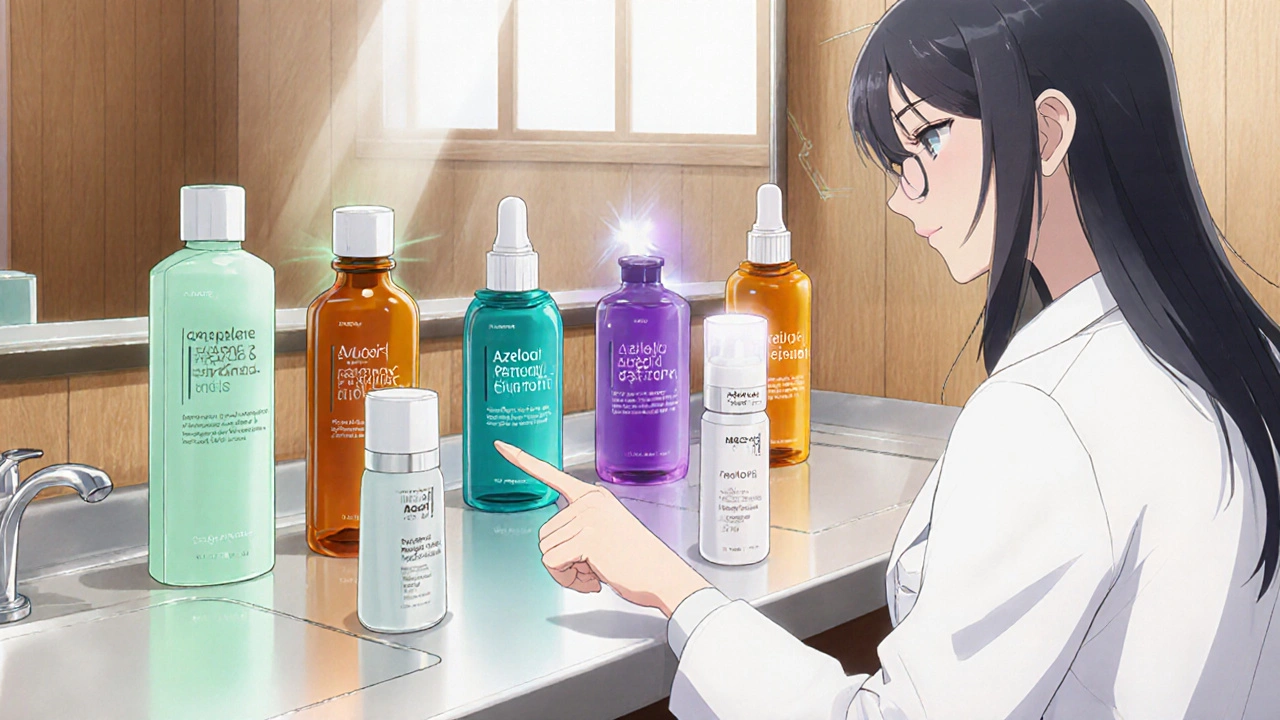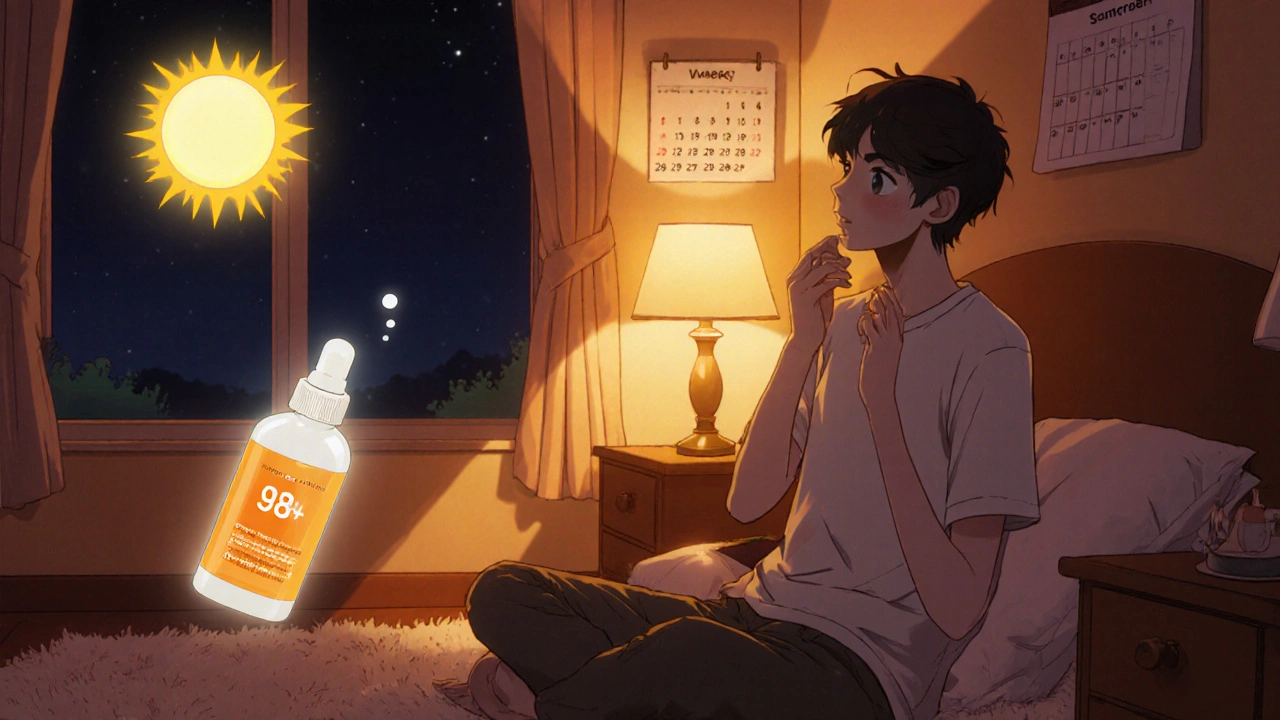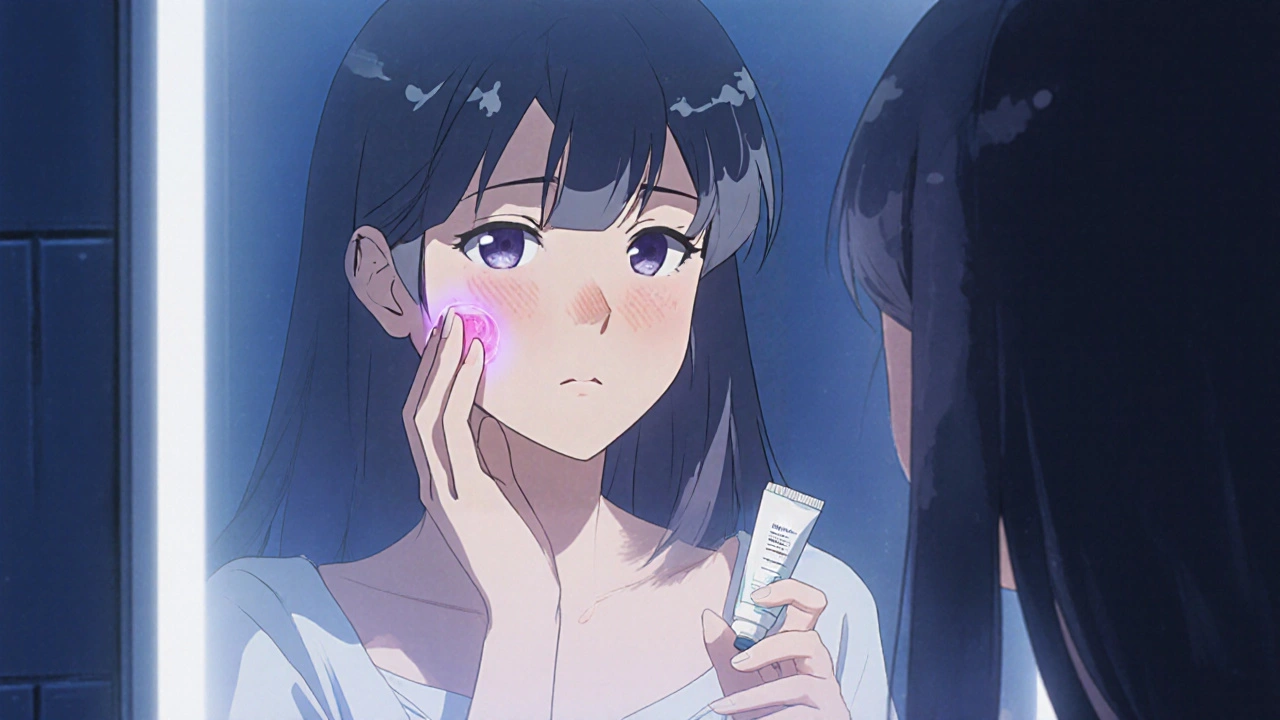If you’re curious about a quick Tretinoin comparison and want to know whether a prescription retinoid or an over‑the‑counter option fits your skin best, you’re in the right place. Below we break down how Tretinoin 0.05% stacks up against the most popular alternatives, line up the pros and cons, and give you practical tips to avoid the dreaded redness and flaking.
What is Tretinoin?
Tretinoin a prescription retinoic acid used for acne and photoaging is a vitamin A‑derived molecule that accelerates skin cell turnover. In Australia it’s available in 0.025% and 0.05% creams or gels, typically prescribed by dermatologists for moderate to severe acne, melasma, and fine‑line reduction.
How Tretinoin Works
When you apply Tretinoin, it binds to retinoic acid receptors (RAR‑α, RAR‑β, RAR‑γ) inside skin cells. This binding triggers a cascade that:
- Speeds up the shedding of dead skin cells, keeping pores clear.
- Boosts collagen synthesis, which smooths fine lines.
- Reduces the formation of new comedones by normalising keratinisation.
Because it works at the cellular level, results usually appear within 4‑8 weeks, but the most noticeable changes can take up to 12 weeks.
Common Alternatives to Tretinoin
Not everyone can or wants to use a prescription retinoid. Below are the six alternatives that most people encounter in pharmacies or online.
Adapalene a third‑generation synthetic retinoid available over‑the‑counter in 0.1% and 0.3% strengths is often marketed for acne. It’s gentler than Tretinoin but still activates RAR‑β and RAR‑γ.
Retinol a milder, over‑the‑counter vitamin A derivative that requires conversion to retinoic acid in the skin is popular in anti‑aging serums.
Azelaic Acid a dicarboxylic acid that combats acne and rosacea while offering mild keratolytic action is available in 10%-20% creams.
Benzoyl Peroxide an oxidizing agent that kills acne‑causing bacteria and reduces inflammation comes in 2.5%-10% formulations.
Tazarotene a high‑potency prescription retinoid used for psoriasis, acne, and photoaging is sold at 0.05% and 0.1% strengths.

Criteria for Comparing Retinoid Options
When you line up these products, think about five practical factors:
- Effectiveness: How well does the ingredient clear acne or improve texture?
- Speed of results: Weeks needed before you see visible change.
- Irritation risk: Frequency of redness, peeling, or burning.
- Cost per month: Typical out‑of‑pocket expense in Australian dollars.
- Ease of access: Prescription required vs. OTC availability.
Side‑by‑Side Comparison Table
| Alternative | Typical strength | Primary use | Onset (weeks) | Common irritation | Approx. cost (AU$ / month) |
|---|---|---|---|---|---|
| Tretinoin | 0.05% | Acne & photo‑aging | 4‑8 | Redness, peeling (30‑40% users) | 70‑100 |
| Adapalene | 0.1% (OTC) | Acne | 6‑10 | Mild irritation (15‑20% users) | 30‑45 |
| Retinol | 0.3%‑1% (serum) | Anti‑aging | 8‑12 | Dryness, mild peeling (10‑15% users) | 40‑80 |
| Azelaic Acid | 15% | Acne & rosacea | 6‑10 | Itching, mild burning (10‑12% users) | 50‑70 |
| Benzoyl Peroxide | 5% | Acne | 2‑4 | Dryness, redness (20‑25% users) | 15‑25 |
| Tazarotene | 0.1% | Acne, psoriasis | 4‑6 | Significant irritation (35‑45% users) | 90‑130 |

Which Option Is Best for Different Skin Goals?
Acne‑prone teens or adults on a budget - Benzoyl Peroxide gives the fastest bacterial kill and is cheap, but it doesn’t improve texture long‑term. Pair it with a gentle cleanser and you’ll see fewer breakouts in 2‑4 weeks.
Adults seeking both acne control and anti‑aging benefits - Tretinoin remains the gold standard. Its dual action on collagen and comedones means smoother skin after about 8 weeks, though you need to tolerate some irritation.
Sensitive skin or rosacea‑prone users - Azelaic Acid offers a milder keratolytic effect without the intense dryness of retinoids. Results appear a bit slower, but most people experience less burning.
Those who love a DIY routine - Retinol serums let you start low and build up. They’re a slower path (12‑16 weeks) but are easy to incorporate into a multi‑step skincare line.
Prescription‑only, high‑potency needs - Tazarotene works fast for stubborn acne or psoriasis patches, yet its irritation profile is the highest among the group. Only consider it if you’ve tried milder options first.
Tips to Use Retinoids Safely and Maximise Benefits
- Start with a pea‑size amount every third night and increase frequency as tolerance builds.
- Always apply to clean, dry skin; wait 20‑30 minutes after cleansing.
- Follow with a fragrance‑free moisturizer to buffer peeling.
- Never combine a retinoid with a strong exfoliant (like AHAs) in the same routine - it spikes irritation.
- Use sunscreen with SPF 30+ daily; retinoids increase photosensitivity.
- If redness becomes severe, cut back to every other night or switch to a lower‑strength alternative for a few weeks.
Frequently Asked Questions
Can I use Tretinoin while pregnant?
No. Tretinoin is classified as pregnancy‑category C and has been linked to birth defects. Switch to a pregnancy‑safe option like azelaic acid or a gentle cleanser until after delivery.
How long should I wait before applying makeup after a retinoid?
Wait at least 30 minutes for the retinoid to absorb, then you can apply a non‑comedogenic primer and lightweight foundation. If you notice flare‑ups, give your skin an extra 10‑15 minutes.
Is Adapalene suitable for anti‑aging?
Adapalene does stimulate collagen modestly, but it’s primarily acne‑focused. For dedicated anti‑aging, a retinol or low‑dose Tretinoin regimen works better.
Can I mix Benzoyl Peroxide with a retinoid?
It’s possible, but the combination can be harsh. Most dermatologists recommend using Benzoyl Peroxide in the morning and a retinoid at night, with a moisturizer in between.
How do I know if I’m over‑using a retinoid?
If you experience persistent burning, swelling, or flaking that lasts more than a few days, scale back the frequency or drop to a lower concentration. Your skin should feel a mild tingling, not severe pain.
Choosing the right retinoid is a balance of goals, skin tolerance, and budget. Armed with this comparison, you can pick the option that fits your routine and start seeing smoother, clearer skin in the weeks ahead.


Start slow, stay consistent, and watch your skin transform.